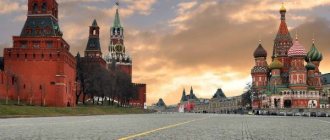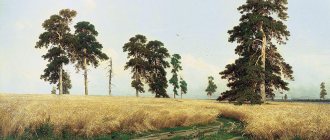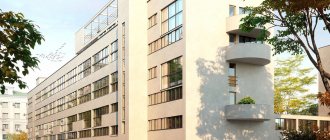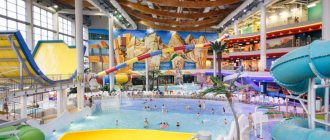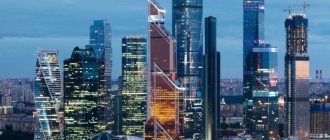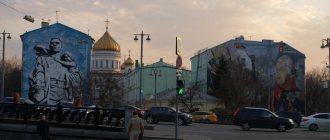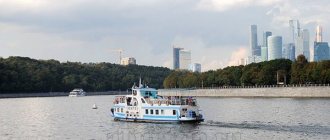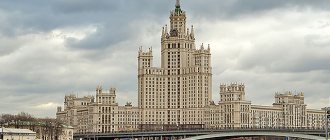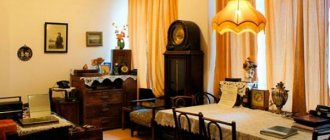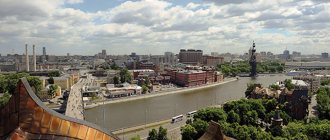Weekend travel: estates in Moscow and the Moscow region May 10, 2012, 17:00 | Svetlana Vetka
25 chosen
For a huge number of Muscovites, May is the beginning of the dacha season. In our family, the country lifestyle is viewed with misunderstanding, but with the first truly warm days, we open our season. I call it “homestead season.” We devote one or two weekends a month from May to October to Moscow or Moscow estates. Why exactly estates? The fact is that such a mini-trip is several entertainments in one. Firstly, you can simply walk around the park, admiring the alleys, flower beds, statues and, of course, ancient buildings. In some parks you can even have a picnic. There are also plenty of opportunities for museum lovers: most estates have permanent museum exhibitions and temporary exhibitions, and often host musical and theatrical performances, festivals and celebrations. Everyone can find something to their liking. Here are a few of my favorite weekend travel itineraries.
Kolomenskoye . I want to start with this estate not only because it is the oldest in Moscow (the residence of the Russian tsars, including Ivan the Terrible, was here). I grew up in Kolomenskoye - here we came with friends after (and sometimes instead of) lessons, here we walked with our parents on weekends... Then the museum-reserve was surrounded by real villages with ancient wooden houses and the fields of the state farm "Garden Giant", and from all the temples there were only one - the Kazan Icon of the Mother of God. Now Kolomenskoye has become well-groomed - paved paths, beautiful flower beds (even a small Apothecary garden), restored architectural monuments. And hundred-year-old oaks and lindens, a picturesque ravine, and an ancient apple orchard still delight the eye. Like the amazing tented Church of the Ascension of the Lord (1532), the Church of the Beheading of John the Baptist in Dyakovo, the Church of St. George with a bell tower and much more. There is also an excellent museum of wooden architecture, part of which is the wooden palace of Alexei Mikhailovich, recently rebuilt according to ancient drawings. I don't really like remodels, but the palace and its interiors are impressive. By the way, the Kolomenskoye Museum has a wonderful collection of tiles, and children will be interested in ancient weapons and huge locks with keys to them. There is also a Honey Fair and an exhibition of sand sculptures in May!
Kolomenskoye. Church of the Ascension |
Astaltsev. V.V. “Ancient oaks. Kolomenskoye" |
Kolomenskoye. Rebuilt wooden palace |
Kuskovo is, in my opinion, the most elegant estate in Moscow. The noble noble spirit of a bygone era has been surprisingly preserved here. Maybe that's why this place is so popular with brides and grooms. True, there are more people who want to have a wedding in luxurious scenery than there are opportunities for the estate... The former country residence of the Sheremetev family was very lucky - almost immediately after nationalization, a museum was created here. Therefore, the Main (Grand) Palace, the Italian and Dutch houses, the Grotto pavilions, the Hermitage and other buildings (most of the second half of the 18th century) are perfectly preserved. The interiors of the palace are authentic, which is rare, not luxurious, perhaps, but elegant and harmonious. Inspection is a must! For lovers of glass and ceramics, Kuskovo is a real paradise - there is a museum with the richest collection in Russia. And, of course, Kuskovo is famous for its French park with sculptures and artificial ponds. I’m not a fan of regular parks, but I can’t help but admit the beauty of this... By the way, gradually the French park turns into an English irregular park, and then into a forest park - a wonderful and free (unlike an estate) place for walks.
Kuskovo. General form |
Kuskovo. Castle |
Kuskovo. Decoration of the Grotto pavilion |
Ostankino . Another masterpiece that once belonged to the Sheremetevs. For me, this estate is the most romantic. I still remember the first time I visited Ostankino on a school excursion, how I looked at the amazingly beautiful interiors of the palace theater and, holding my breath, listened to the story of the count’s love for his serf actress... Since then, Ostankino has become a symbol of romance for me... A wonderful historical theater (of which few have survived throughout the world) still receives spectators, or rather listeners, at the Sheremetev Seasons music festival. Ancient opera or music of the 18th century in an ancient theater is unforgettable... Also, speaking about Ostankino, I would like to remember its oldest architectural monument - the Church of the Life-Giving Trinity, built at the end of the 17th century. Be sure to go inside and pay attention to the luxurious iconostasis! It was recently restored, and the miracle of ancient icons framed by gold carvings pleases the soul and the eye. The manor house is surrounded by the so-called Pleasure Garden, painstakingly recreated in its original form. Partly landscaped, partly regular - Ostankino Park delights us with ancient linden trees, flower beds (exactly like in the 18th century), sculptures and the picturesque hill "Parnassus". And all around is a modern park with entertainment for every taste - a pond with boats, horseback riding, children's attractions, a shooting range, a cafe... Walking through the park, you can even walk to the Botanical Garden, but that's another story...
Ostankino. Palace and Church of the Life-Giving Trinity |
Ostankino. Theater |
| Ostankino. Iconostasis of the Church of the Life-Giving Trinity |
Tsaritsyno . This Moscow estate is probably the most mysterious. Fans of the “paranormal” are looking for geopathogenic zones here, archaeologists are still exploring the mounds of the ancient Vyatichi, historians are wondering why the grandiosely conceived royal residence never became such, slowly deteriorating and collapsing... I remember Tsaritsino well in the form of picturesque, but dilapidated ruins, when climbers trained on the walls of the Grand Palace. And then there was some kind of charm in it - albeit wild and unkempt... Now Tsaritsino appears in all its splendor - the Grand Palace and the Bread House were raised from the ruins, other buildings were restored, a unique cascade of ponds was cleared, the park was put in order, a light and music fountain was opened, attracting thousands of spectators. But some kind of romantic mystery remains - in the shady alleys of old trees, in openwork bridges, decorative arches and gates... The estate has several permanent exhibitions, and temporary exhibitions often take place. Now, for example, you can get acquainted with the wardrobe of Soviet stars (“Fashion behind the Iron Curtain. From the wardrobe of stars of the Soviet era”), and in the fall you can admire Rodin’s sculptures or products of the Imperial Porcelain Factory. You can also attend various concerts, go to the fair for honey, take part in children's interactive programs and even become a member of the Music Club, where meetings of like-minded people take place in a friendly atmosphere.
Tsaritsyno. Grand Palace |
| Tsaritsyno. A park |
| Tsaritsyno. Fountain |
I discovered the Lyublino estate The estate on the shore of the Lublin pond was built at the beginning of the 19th century for the retired foreman Durasov. I came across two legends about this estate. One - romantic - claims that the name “Lublino” was invented as a sign of the owner’s love for the maid, whom he did not dare to marry. The second legend - architectural - claims that the house was built in the form of the Order of St. Anne, of which the retired brigadier was proud. However, serious experts believe that neither one nor the other legend has any basis... Now in Lyublino you can visit the manor house and admire its recreated interiors, as well as see a unique exhibition on the history of Russian billiards. And around there is a huge forest park with a pond...
Lyublino. manor house |
| Lyublino. Manor house interior |
The Lublin Forest Park borders on another wonderful Moscow park - Kuzminsky. Unfortunately, little remains of the Kuzminki estate, which belonged first to the Stroganovs and then to the Golitsyns. The destruction began with a terrible fire in 1916, and after the revolution everything finally fell into disrepair. Now a beautiful park with three ponds and the Lion's Pier has been restored in the estate, the manor buildings have been restored, and it is planned to recreate the main house. The Church of the Blachernae Icon of the Mother of God became operational again. The museum's exhibitions dedicated to Russian estate culture and the Golitsyn princes are very interesting. And just walking around the park is very pleasant!
Kuzminki. Lions on the pier |
| Kuzminki. Church of the Blachernae Icon of the Mother of God |
I took you through my favorite Moscow estates. Of course, there are many more estates in the capital... But there is also the Moscow region, where there are so many beautiful corners... How difficult it is to make a choice...
Arkhangelskoe . Of course, Arkhangelskoye! A real pearl in the estate necklace of the Moscow region. Like many, I am frightened by encroachments on the territory of the museum-reserve, which have been talked about so much lately. I would like to hope that the estate will not suffer... Arkhangelskoye traces its history back to the 16th century, it is connected with the Golitsyn families, and then the Yusupovs, under whom it reached its real heyday. It is no coincidence that Arkhangelskoye is called “Versailles near Moscow” and compared to Peterhof. The luxurious regular park, laid out on the high bank of the Moscow River, amazes with its “living architecture” of alleys, terraces and lawns and an abundance of sculptures, garden vases, balustrades and stairs. The buildings are surprisingly harmoniously integrated into the park - the Grand Palace, and the garden pavilions and the Yusupov temple-tomb (“Colonnade”), and the Gonzaga Theater... In the depths of the park (no longer a regular one, but a landscape one) hides a small temple of the Archangel Michael (now operational again) , Holy Gate and other buildings. Walking around the park, discovering something new every time, is a real pleasure. The only pity is that the Military Sanatorium, built in the 30s of the last century, changed the general appearance of the estate... In Arkhangelskoye you can still see the numerous collections of the museum, but it is best to come to the estate during some holiday or festival. For example, I never miss the June festival “Manor. Jazz" and the traditional September holiday "At the End of Summer".
Arkhangelskoe. Castle |
Arkhangelskoe. A park |
Arkhangelskoe. Church of St. Michael the Archangel |
Abramtsevo . This estate, located near Sergiev Posad, became famous thanks to its owners and their guests. Under Aksakov, Gogol, Turgenev, Shchepkin, Tyutchev stayed here; under Mamontov - Vasnetsov, Polenov, Levitan, Vrubel, Repin, Chaliapin... There is even the concept of “Abramtsevo art circle”. Vrubel opened a ceramic workshop in Abramtsevo. Be sure to find Vrubel’s bench in the park, decorated with majolica tiles! Through the efforts of Elena Polenova, a unique wood carving workshop was created (an exhibition dedicated to this remarkable woman was recently held at the Tretyakov Gallery). The “wild” manor park is especially good, more like a dense forest. And in this forest are hidden a manor house, a wonderful “hut-on-chicken-legs”, a bathhouse-teremok, a small church in the old Russian style, built according to the design of Vasnetsov and Polenov... In spring, summer and early autumn it is especially good here.
| Abramtsevo. Church |
Abramtsevo. A hut on chicken legs |
Abramtsevo. Tiles of Vrubel's bench |
Dubrovitsy . This estate is not very well known, and, unfortunately, it is poorly preserved. The park has been practically destroyed (which is a shame, since these days, during dubious restoration, relict trees have been cut down); the Institute of Animal Husbandry is still located in the manor house. But it’s worth coming here, if only because of the Church of the Sign of the Blessed Virgin Mary. This 17th-century church, under the protection of UNESCO, was miraculously preserved - it was planned to be demolished in the 30s. Now it has been returned to the believers. It is impossible to describe the church with its unique carvings - it is so unusual (what architectural styles are not mixed here!) You need to come and see with your own eyes... And the place itself is very beautiful - no matter what...
Dubrovitsy. Church of the Sign of the Blessed Virgin Mary |
| Dubrovitsy. Church carving details |
Of course, it’s impossible to list all the beautiful places in the Moscow region... I think every Muscovite has their own “reserved corners” in the capital and its environs. I’m not even talking about the residents of St. Petersburg - there are so many estates in the city itself and its suburbs... But I’m sure that in other cities there will definitely be an estate that has been preserved from earlier times with a beautiful park around it... Maybe you can tell me?
Svetlana Vetka , specially for Etoya.ru
Photo: from the author’s personal archive, clubs.ya.ru, planego.ru, aa-ah.ru, dic.academic.ru, gardener.ru, temples.ru, sobory.ru, nice-places.com, kuskovo.ru , artklassik.edu.ru
Izmailovo
Address: st. m. Partizanskaya, Gorodok im. Bauman, 2, building 14 Phone: 8(499)1651236 Website: mgomz.ru Opening hours: 10:00-18:00 Mon-Sat, Sun – day off Cost: free admission
The Izmailovo estate is located in the eastern part of Moscow. The most valuable architectural and natural monuments are: the Intercession Cathedral, the Nicholas Military Almshouse, the Bridge Tower and the Izmailovsky Ponds. The former owners of the estate since the 16th century were none other than representatives of an old family of boyars of the famous Romanov dynasty.
Izmailovsky Park forms the largest forest area in the capital. The estate itself is located on a specially created, at the behest of Peter I, a beautiful island. By becoming a participant in excursions that take place daily around the estate, you can learn details from the emperor’s childhood, which he spent in this place.
Currently, Izmailovo has the status of a museum-reserve. Many of the attractions have been restored and returned to their former appearance. Also, the museum constantly hosts various exhibitions where you can see exhibits of that era, personal items of the emperor, military weapons, costumes and jewelry. The exhibition takes place in the Bridge Tower.
Travel to the tallest building in Moscow
Church of the Archangel Gabriel (Menshikov Tower). Reconstruction of the original view of Karl Lopyalo. 1955 © Karl Lopyalo / Museum of Architecture named after A. V. Shchusev / Wikimedia Commons
From 1707 to 1723, the Church of the Archangel Gabriel on Chistye Prudy, nicknamed the Menshikov Tower, was the tallest building in Moscow. At the end of the 17th century, Alexander Menshikov, a favorite and closest associate of Peter I, bought vast lands in Myasnitskaya Sloboda for the construction of an estate. St. Gabriel's Church, which stood on this site, became the home temple of his family. Having settled in a new place, Menshikov began to put the surrounding area in order: on his orders, the Filthy Puddle. There are several versions of the origin of this name. According to the most common one, the Poganaya Puddle began to be called the pond because merchants from nearby butcher shops and slaughterhouses located on Myasnitskaya Street dumped waste into it. turned into Chistye Prudy, and on the site of the old church, a new temple was erected in the Western European Baroque style - the first in the capital. On the roof, architect Ivan Zarudny placed a “spitz” previously unseen in Russia - a wooden spire almost a third of the height of the building - and a copper angel with a cross. Thanks to the Menshikov spire, the tower (84.2 m) overtook the bell tower of Ivan the Great (81 m).
The church was decorated with a clock mechanism ordered in England with fifty bells. According to a contemporary, “large and excellent chimes were installed on it, playing different songs every hour, half hour and quarter of an hour and could, in addition, serve for the ordinary playing of bells, which still happens every day.” Diary of the chamber cadet Berchholz, kept by him in Russia during the reign of Peter the Great, from 1721 to 1725. M., 1860. P. 53..
In the summer of 1723, during a thunderstorm, the spire was struck by lightning: the ensuing fire completely destroyed the wooden top. The clock was also destroyed in the fire, and the bells that fell from above damaged the lower part of the temple. His Serene Highness, who by that time had become the Governor-General of St. Petersburg, did not send money for restoration, and the church ceased to be the tallest in the city.
Kolomenskoye
Address: st. metro station Kolomenskaya, Andropova Ave., 39 Phone: 8 (499) 7828921 Website: mgomz.ru Opening hours: 08:00-21:00 Mon-Sun Cost: free admission
The location of the estate was the bank of the Moscow River. Getting to Kolomenskoye is not difficult, since the estate is located near a metro station with the same name. In total, Kolomenskoye covers an area of almost 390 hectares.
The very first notes about the estate appeared back in 1336, in the manuscripts of John Kalita. The famous commander Dmitry Ivanovich Donskoy erected the Church of St. George the Victorious here. And during the reign of Ivan the Terrible, the area was replenished with the village of Dyakovo and the well-known shrine - the Church of the Ascension of the Lord and the Church of the Baptist.
The most important role in the development of the estate was played by Tsar Alexei Mikhailovich, who began building luxurious palaces for the royal chambers. The park is famous not only for its architectural buildings, but also for its wonderful gardens. They are represented mainly by lindens, oaks, apple trees and strange plants from overseas countries.
Walk through the city's main triumphal gate
Red Gate in Moscow. Engraving by Mikhail Makhaev. XVIII century State Historical Museum / Diomedia
In December 1709, in honor of the victory in the Battle of Poltava, eight wooden triumphal arches were erected in the capital. One of them was placed on the border of Zemlyanoy Town near Myasnitskaya Street. The arch burned four times in Moscow fires, until a new stone Red Gate was built in 1754, designed by architect Dmitry Ukhtomsky. The gates were decorated with marble and adorned with fifteen paintings and forty-eight emblems: in the center - a portrait of Empress Elizabeth Petrovna, surrounded by the coats of arms of four kingdoms - Moscow, Siberia, Kazan and Astrakhan, provincial coats of arms, insignia and other images personifying Russian statehood. The triumphal arch was crowned with symbolic figures personifying glory, courage, loyalty, abundance, constancy, mercy, and so on.
According to one version, the gates were called Red because they stood on the way to the Krasnoprudsky Palace and Krasnoe Selo; according to another, the gates were originally painted red. Pogossky's guidebook reported that under Peter the gate was called Florovsky, as it was located near the Church of Florus and Laurus at the Myasnitsky Gate. At that time Maslenitsa was celebrated there:
“Here the transformer of Russia was the first to drink a glass of wine for the health of his beloved people, sit down on the set table and have dinner; The admiring people surrounded the father-sovereign with a loud “Hurray”, threw their caps into the air and at this point rejoiced with unfeigned joy.” A. Pogossky. Moscow, its shrines and antiquities. St. Petersburg, 1871. P. 160..
Petrovsky Travel Palace
Address: Leningradsky Prospekt, 40 Telephone: Website: ru.petroffpalacehotel.ru Conditions of visit: visit by appointment (by phone) as part of an excursion group
The palace was created in the 18th century by order of Empress Catherine II at the end of the Russian-Turkish battles. The palace chambers were a kind of hotel for wealthy nobles traveling from St. Petersburg to Moscow.
Russian emperors stayed within the walls of the palace: Catherine II, Paul I, Nicholas II. From 1920 until 1997, the palace became the base where the Air Force Engineering Academy was located. N. E. Zhukovsky.
Today the estate occupies the status of the Moscow Government Reception House. This is why pre-registration is required to take the tour.
Look at the model of the ship of Peter I at the Sukharev Tower
1 / 3
A festive masquerade procession from the village of Vsekhsvyatskoye to Moscow during the celebration of the Peace of Nystadt in 1722. 18th century engraving from the collection of D. A. Rovinsky Wikimedia Commons
2 / 3
Vasily Surikov. Great masquerade in 1722 on the streets of Moscow with the participation of Peter I and Prince Caesar I. F. Romodanovsky. 1900 State Russian Museum
3 / 3
Sukharev Tower. Engraving from a watercolor by Jules Arnault. XIX century State Museum of A. S. Pushkin
Another skyscraper of that time was the Sukharev Tower. The building, reminiscent of European town halls, was built in several stages between 1692 and 1701. This was a sign of Peter I’s gratitude to Streltsy Colonel Lavrentiy Sukharev: his regiment remained loyal to the sovereign during the Streltsy revolt of 1689. A nine-meter model of the Friedemaker (translated from Dutch as “Peacemaker”), one of the first battleships of the Baltic Fleet, launched in St. Petersburg in 1721, was kept in a wooden extension near the western wall of the tower.
The Moscow Friedemaker became famous as the flagship of the grandiose masquerade organized in Moscow in the winter of 1722 in honor of the victory in the Northern War. The dressed up nobility, led by Peter, rode around the city for several days in boats and ships: they were placed on runners and harnessed by horses, oxen and even bears. The Holstein nobleman Friedrich Wilhelm von Berchholtz, a participant in the masquerade, described Peter the Great’s “Peacemaker” as follows:
“Behind them came the emperor’s large ship (30 feet long), made exactly like the battleship Friedemaker by the same craftsmen who built the latter. It had 8 or 10 real small cannons, from which they fired from time to time, and many more wooden and blind ones. <…> The emperor himself commanded it as a shipmaster and commander, having with him 8 or 9 little boys in identical boatswain's suits and of the same height, several generals dressed as drummers, and some of his orderlies and favorites. His Majesty was having fun like a king. Not having here, in Moscow, the opportunity to rush through the waters like in St. Petersburg, and despite the winter, he nevertheless did with his small, dexterous boatswains on the dry route all the maneuvers possible only at sea. them in Russia during the reign of Peter the Great, from 1721 to 1725. M., 1860. pp. 70–71..
Under Empress Elizabeth Petrovna, “Friedemaker” was a participant in the Moscow parade in honor of the victory in the Russian-Swedish War of 1741–1743. The Masquerade Ship was destroyed in a fire in 1812.
Tsaritsyno
Address: st. m. Tsaritsyno, Orekhovo, st. Dolskaya, 1 Phone: 8(495)3224433 Website: www.tsaritsyno-museum.ru Opening hours: 06:00-00:00 Mon-Sun Cost: free admission
The estate is located in the southern part of the city, not far from a metro station with the same name. The very creation of the estate dates back to the beginning of 1775, during the reign of Empress Catherine II.
Initially, the construction of the palace ensemble of the estate was entrusted to V. Bazhenov. However, he delayed the work, he was removed from business, and the creation of the residence was transferred to the no less famous architect M. Kazakov at that time. But, by coincidence, the palace was not completed during the Empress’s lifetime, and after her death the work came to a standstill.
In the last years of the 19th century, the estate became a summer vacation spot for famous representatives of the literary sphere: F. M. Dostoevsky, I. A. Bunin, F. I. Tyutchev, A. P. Chekhov. But in the 21st century, the estate was restored and the missing elements were completed.
Tsaritsyno is recognized as the only palace complex of its kind, made in the “pseudo-Gothic” style. The estate regularly hosts concerts, exhibitions, literary evenings and excursions.
"Serednikovo"
Located in the urban district of Solnechnogorsk, Moscow region. Most of the estate buildings were created at the end of the 18th century, when the estate was owned by Senator Vsevolod Vsevolozhsky. After him, the estate belonged to Colonel Nesterov, then to Count Saltykov. In 1825, Serednikovo was bought by Major General Dmitry Stolypin, who was the brother of Mikhail Lermontov’s grandmother. The famous writer stayed here in the summer during his youth.
In the 60s XIX century Pyotr Stolypin, the future statesman, spent his childhood in Serednikovo. After the Stolypins, the Firsanovs became the owners of the estate, and musicians and artists came to visit them, including Fyodor Chaliapin, Sergei Rachmaninov, Valentin Serov.
“Serednikovo” is the former estate of the Vsevolozhskys and Stolypins.
The walls of one of the halls of the manor house are decorated with artistic paintings on the theme of Lermontov’s poem “The Demon”. On the territory of the reserve there is an obelisk dedicated to the poet.
After the revolution, in the summer of 1919, Lenin rested here, and in 1925 a sanatorium for patients with nervous disorders was located in the buildings of the estate. During the war there was a hospital here, and after the war there was a sanatorium for tuberculosis patients.
By the end of the twentieth century. the buildings began to collapse, and Serednikovo was leased to the Lermontov Heritage Foundation. In the 2000s. the buildings have been restored. In addition to houses and a horse yard, there is a park with a pond and 3 stone bridges with arches.
Filming and TV series took place in Serednikovo, including “Poor Nastya”, “Closed School”, “Admiral”. Nowadays there is a Sunday school here and cultural events are held.
Pashkov House
Address: metro station Library named after Lenin, st. Vozdvizhenka, 3/5с1 Telephone: Website: leninkatour.ru Excursion hours: 10:00-19:00 Tue-Sun, Mon – day off Cost: adults - 900 rubles, schoolchildren - 700 rubles, pensioners and students - 400 rub., children from large families - free of charge Conditions of visit: you can visit Pashkov’s house exclusively as part of excursions
One of the most famous buildings built at the end of the 18th century on Vagankovsky Hill and made in the classicism style of the early era. The house became famous in its time due to its location and height - it became the first residential building from the windows of which one could look down on the Kremlin.
Pashkov's house was repeatedly mentioned in the works of famous artists, writers, poets and even makers of outlandish gizmos - the image of the house is even present on candy wrappers and matchboxes. On the pages of Bulgakov’s famous novel “The Master and Margarita,” a description of the house can be observed during the meeting of Woland and Azazello.
After the house was handed over to the authorities, the Noble Institute was located in it, followed by the Fourth Moscow Gymnasium, then the Rumyantsev and Public Museums, and the Public Library of the USSR. The building was restored only in 2007.
Today, Pashkov’s house is open to the public. The building has several reading rooms, where rare collections of literary and journalistic works from all over the world are collected. Exhibitions and excursions are organized daily for tourists in the house.
Tolstoy Estate Museum in Khamovniki
Address: metro station Park of Culture, st. Leva Tolstoy, 21 Phone: Website: tolstoymuseum.ru Opening hours: 10:00-18:00 Tue-Sun, ticket office until 17:00, Mon and last Friday of the month - day off Cost: 250 rubles, for foreign citizens 300 rubles .
The estate was a winter residence for L.N. for a long time. Tolstoy and his family (from 1882 to 1901). It was here that the writer created literary creations: “The Death of Ivan Ilyich”, “The Kreutzer Sonata”, the novel “Resurrection”, the plays “The Fruits of Enlightenment”, “The Power of Darkness”, “The Living Corpse”. In total, Tolstoy wrote about a hundred novels and plays during his residence.
The estate is surrounded by a luxurious linden garden with cozy gazebos and benches where you can relax after a long journey. Today, the estate is completely open to the public and has the status of a memorial museum, part of the State Museum of Leo Tolstoy (since 1921).
Estate "Vlahernskoye-Kuzminki"
Address: metro station Kuzminki, st. Poplar Alley, 6 Phone: 8(495)3726066 Website: www.museum.ru Opening hours: 10:00-18:00 Mon-Sat, Sun – day off Cost: free
The estate is recognized as the largest and most beautiful in the capital and its outskirts. It gained its greatest fame in the 18th century. The former owners of the estate were the merchants Stroganovs and the princely family of Golitsyns.
Every day, various excursions, exhibitions, and meetings with famous writers and musicians take place on the territory of the former estate. There is also a museum of Russian estate culture here.
Kuskovo
Address: metro station Novogireevo, st. Yunosti, 2 Phone: 8(495)3753131, 8(495)3700150, 8(495)3701630 Website: kuskovo.ru Opening hours: 10:00-20:00 Mon-Sun Cost:
- Palace – 250 rubles;
- Large stone greenhouse - 150 rubles;
- Italian house – 100 rubles;
- Dutch house – 100 rubles;
- Hermitage – 100 rubles.
The estate was formed at the end of the 18th century and since then has been considered one of the most beautiful architectural and artistic ensembles of the 18th century. Currently, about 20 architectural creations of that time are available on the territory of the estate, the most popular of which are: the Grotto, the Palace, and the Great Stone Greenhouse.
All art monuments are available for visits, including the luxurious palace, which is the crown of the architectural complex. Also on the territory of the estate there is a French park unique in its flora, which has survived to this day.
In addition to exotic flowers and trees, in the park you can admire marble sculptures made by hand by famous craftsmen from Russia and Europe.
Lyublino
Address: metro station Volzhskaya, st. Letnyaya, 1, bldg. 1 Phone: 8(495)3501553, 8(499)7227189 Website: mgomz.ru Opening hours: 10:00-18:00 Mon-Sat, Sun – day off Cost: free
The estate is a collection of architectural and natural works of art from the late 18th century. The most popular attractions of the estate are: artificial ponds, a park and an artistic mansion.
It is still not known who the estate was named after, but many historians believe that it received its name after the wife of the first owner of the estate, Grigory Godunov. However, this is not certain. The most famous owners of the estate were: Prince Vladimir Prozorovsky, nobleman Nikolai Durasov and Princess Anna Urusova.
On the territory of the estate, with the exception of the park and mansions, there is also a theater, greenhouses and stables. The Teatrograd theater and park are currently under restoration.
Museum-estate "Ostafyevo"
Address: Moscow region, Podolsky district, p/o Ryazanovo, village. Ostafyevo Phone: 8(495)5185226 Website: www.ostafyevomuseum.ru Opening hours: 10:00-17:00 Mon, Thu-Fri; 12:00-21:00 Tue; 10:00-16:00 Wed; Sat-Sun – days off Cost: free
The museum is recognized as a historical monument of estate ensembles of Russian architectural culture of the 19th century. Outstanding Russian writers, such as Pushkin, Baratynsky, Griboedov, Gogol, Zhukovsky, Mitskevich, Karamzin, have repeatedly visited the estate. By the way, Karamzin created his famous multi-volume work “History of the Russian State” here.
Despite the fact that restoration work is currently underway in the estate, it is still open to the public. Daily exhibitions and excursions are available for tourists.
State Literary and Memorial Museum-Reserve of A.P. Chekhov “Melikhovo”
On March 13, 2021, the Maslenitsa holiday in Melikhovo will take place.
In addition to the work of the permanent museum sites, the program includes:
- Interactive program “Acquaintance with peasant life”
- Performance of the folk ensemble "Podmoskovny Souvenir"
- Maslenitsa musical and entertainment program with artists of the Zazerkalye Theater: theatrical miniatures, games, barkers, dancing, competitions, prizes and a cheerful mood.
- Conquering the Maslenitsa pillar
- Burning of Maslenitsa
- Classical music concerts performed by students and trainees of the Moscow State Conservatory named after. P.I. Tchaikovsky
- Performance by Honored Artists of Russia Alexander Uskov and Maria Belyaeva with the concert “The Wonderful Gusley Chime”
- Creative workshop: “Painted spoons burn like the sun”
- Pancake outlets
- Horseback riding (extra charge)
Come see off winter and welcome spring!
Ticket prices: Adult - 600, Pensioner - 500, Children - 300 rubles.
Sviblovo
Address: Lazorevyi pr-d, 15 Phone: Website: https://usadba.troitsasviblovo.ru Opening hours: 09:00-18:00 Mon-Sun Cost: free entrance; excursions (by appointment) - 400 rubles.
Currently, the estate is owned by the Russian Orthodox Church. It was thanks to this that the Temple of the Life-Giving Trinity, destroyed during the revolution, was restored, as well as the architectural structures of the estate. The surroundings of the estate form a picturesque park with springs, bridges and gazebos.
The estate itself is made in the style of Naryshkin baroque and Russian classicism, the basis of which was bright combinations of catchy colors. The well-known owners of the estate were the ancient noble families of the Pleshcheevs and Naryshkins, and the famous historian Karamzin also lived in Sviblovo.
"Moscow Country Club"
The Moscow Country Club Hotel invites you to spend the winter brightly and energetically and celebrate the wide Maslenitsa 2021 with songs, round dances, fun competitions and other Maslenitsa entertainment
Event program:
- street parties and attractions;
- treats: fresh pastries, delicious pickles, rich cabbage soup, freshly baked pancakes, warming sbiten and mead, aromatic tea;
- performances by folklore groups, buffoons and stilt walkers;
- games and relay races in Russian folk style;
- attractions and competitions for children and adults;
- fair;
- traditional burning of Maslenitsa.
The ticket price for guests not staying at the hotel is 2000 rubles. Children under 12 years old are free.
Narrow
Address: metro station Konkovo, st. Profsoyuznaya, 123-a, 123-b. Phone: Website: vk.com/uzkoe1 Order tickets through agencies:
- podmoskovnye.ru
- https://bilet.podmoskovnye.ru/e/5c46ecc458de0d000c2bc1be?partner_id=5ba9147ea3610b000c465446
Conditions for visiting: at the moment there is a sanatorium on the territory of the estate.
You can visit the estate only with a guided tour. “Uzkoe” was built several centuries ago and is considered one of the oldest estates formed in the capital and its environs. The main attraction of the estate is the Church of the Kazan Icon of the Mother of God, built in 1968.
Former owners from among influential people were the Streshnev, Golitsyn, Tolstoy and Trubetskoy families.
Today, access to the territory of the estate is possible only during excursions, since a sanatorium is now located here.
If you have not yet chosen where you will live and want to save money when booking, we recommend using the RoomGuru service. Firstly, it contains hotels, apartments and guest houses from many different booking systems, so you won’t miss out on a worthwhile option. Secondly, you can immediately compare prices for one place in different services and book where it is cheaper (this is not always Booking!).
Stories, routes and tips from tourists with photos
When planning your trip, read stories and reviews from experienced travelers. They provide more useful information than faceless guidebooks, because the routes and places have been verified by real people through their own experience. We offer several stories that will help you create your own route:
- The capital in festive decoration, or museum and gastronomic trip No. 2 - a detailed report on walks around New Year's Moscow from Marina Rybakova.
- Excursions with colorful photographs of the capital's Christmas markets: My New Year's Moscow 2020 from Maria Penina and New Year's Moscow. She shone, surprised, conquered... from Nastenka Pavlik.
All reviews about holidays in Moscow on Turister.Ru
Photo: © Maria Penina
